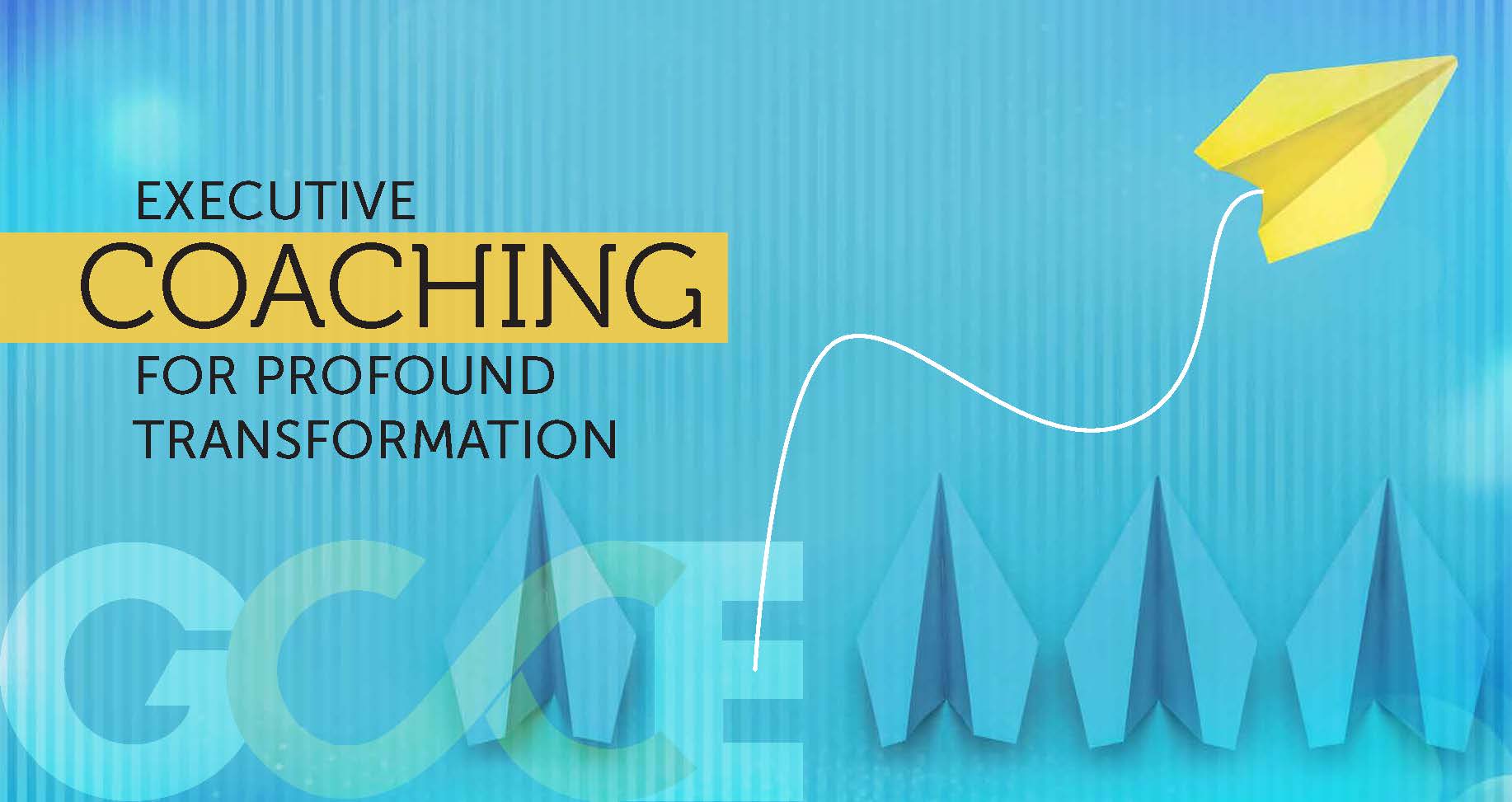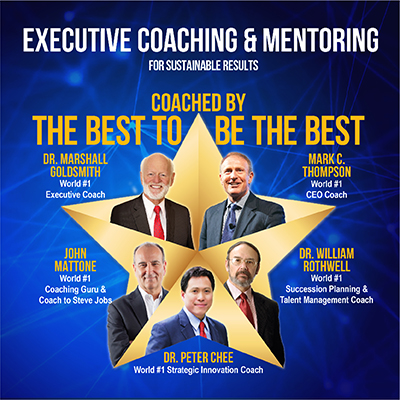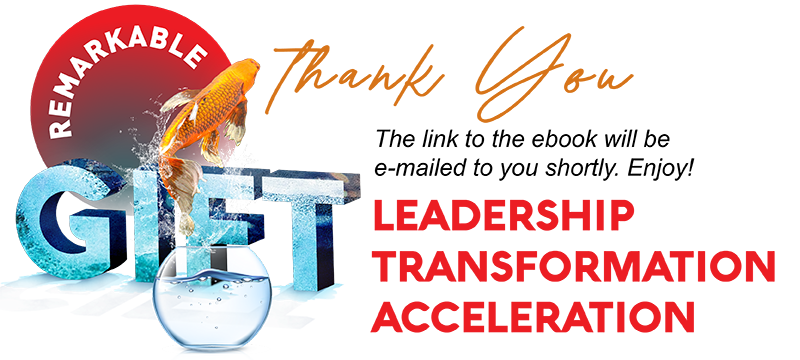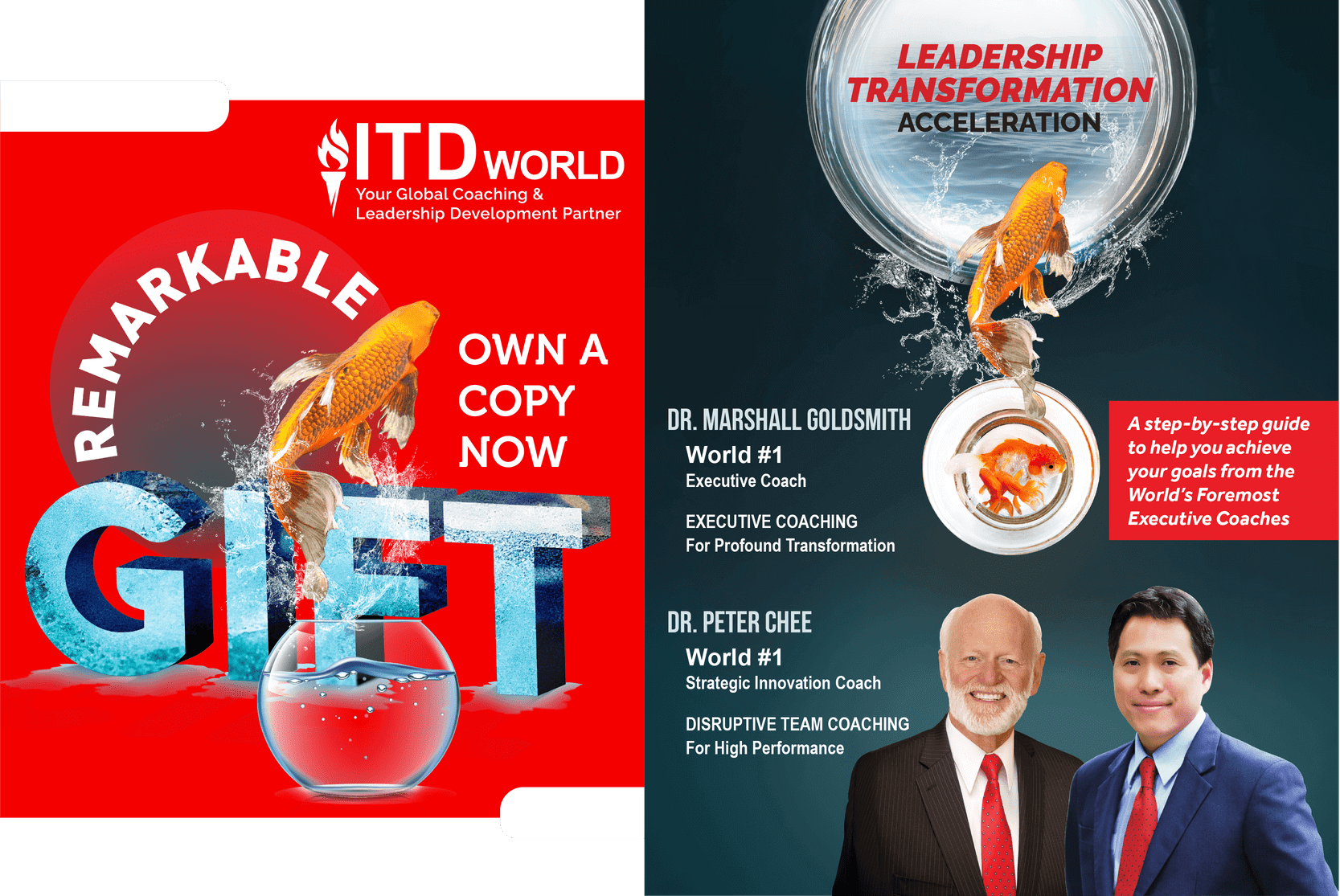
an FAQ
AN FAQ WITH WORLD #1 EXECUTIVE COACH DR MARSHALL GOLDSMITH

is Executive Coaching?
I show people how their own beliefs and the environment they operate in trigger negative behaviors. As an executive coach, I help them achieve sustainable behavior change using simple and practice advice. My mission is simple. In short, I want to help successful people achieve positive, lasting change in behavior; for themselves, their people, and their teams.


do leaders and organizations benefit from Executive Coaching?
Behavioral coaching is only one branch in the coaching field, but it is the most widely used type of coaching. Most requests for coaching involve behavioral change. While this process can be very meaningful and valuable for top executives, it can be just as useful for high-potential future leaders. These are the people who have great careers in front of them. Increasing effectiveness in leading people can have an even greater impact if it is a 20-year process, instead of a one-year program.
At the top of major organizations even a small positive change in behavior can have a big impact. From an organizational perspective, the fact that the executive is trying to change leadership behavior, and being a role model for personal development, may be even more important than what the executive is trying to change. One key message that I have given every CEO that I coach is “To help others develop – start with yourself.”

To help others develop – start with yourself.
Dr Marshall Goldsmith


does the Executive Coaching process look like?
These are the steps for myself, and the coaches in my network, which they need to follow:
- Involve the leaders being coached in determining the desired behavior in their leadership role
- Involve the leaders being coached in determining key stakeholders
- Collect feedback
- Reach agreement on key behaviors for change
- Have the coaching clients respond to key stakeholders
- Review what has been learned with clients and help them develop an action plan
- Develop an ongoing follow-up process
- Review results and start again
- End the formal coaching process when results have been achieved
Basically, this is what I do. I help people who really want to change do just that, change.

The 12 months executive coaching experience with ITD World has been absolutely outstanding. I along with my team have achieved a complete business turnaround, exceeding all key metrics. What is even more exciting is that the re-sults are holistic and sustainable. I am deeply grateful for such an amazing life changing journey
Vishal Kaul Vice, President Pepsico



do leaders and organizations benefit from Executive Coaching?
The first advantage of having an external executive behavioral coach is confidentiality in collecting data. It can be hard for insiders to get valid information about a potential chief executive. Outsiders tend to be more trusted for this type of data collection.
A second advantage of an outside coach is credibility. If your successor needs help in a certain area, you may have credibility as a senior talent executive but have low credibility as a coach or teacher.
A third advantage of an outside coach is time. I have never met a talent leader who wasn’t extremely busy. How much time are you willing to devote to the coaching process?

are some of the leadership challenges which may be roadblocks for executives?
Successful people want to win. It is hard for them not to win. I asked one of my CEO clients, “What have you learned since becoming CEO?” He sighed, “My suggestions become orders.” If you’re the CEO, you always win. You need to learn to let others win.
To help leaders break the habit, I tell them, “Your co-workers and I will give you ideas. Even if you think our ideas are stupid, don’t argue with us or critique our ideas. Just say, “thank you”. If you don’t like our suggestions, don’t do them.
People listen much better when they don’t have to prove how smart they are. I teach my clients how to listen without composing their next comment to prove how smart they are.
Another leadership challenge is the tendency to add too much value. For example, if I come to you, my boss, with an idea, and you think it’s a great idea, you’ll likely say, That’s a great idea, but let’s add this to it.” Well, the quality of the idea may go up 5 percent; however, my commitment to execution may go down 50 percent. It’s not my idea anymore. It’s now become your idea. It’s hard for smart, successful people not to constantly add value. You need to ask, “Is it worth it?” before you speak.

is the top problem leaders face?
Dr Marshall Goldsmith is recognized as the “World’s #1 Leadership Thinker” by Harvard Business Review, “World’s most Influenced Leadership Thinker” by Thinkers50, “#1 global coaching guru” by Global Gurus and Fast Company, “America’s #1 Executive Coach” by Inc. Magazine and “The most credible thought leader in a new era of business” by The Economist.
His coaching clients include many of the world’s most famous organizations such as Ford, Pfizer, GSK, Walmart, and the World Bank. He has authored of many New York Times and Wall Street Journal bestselling books including Triggers, the #1 New York Times and Wall Street Journal bestseller.











